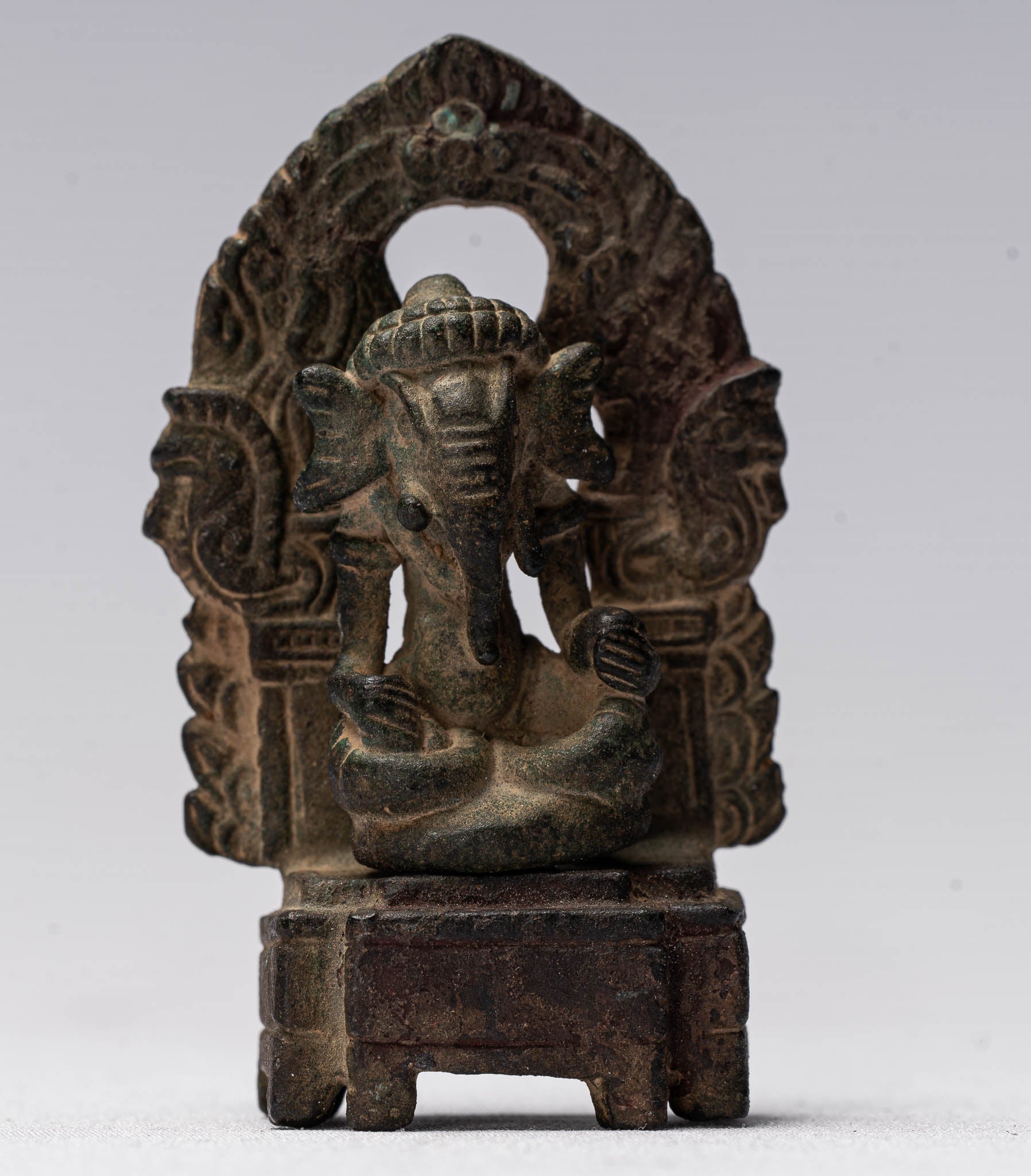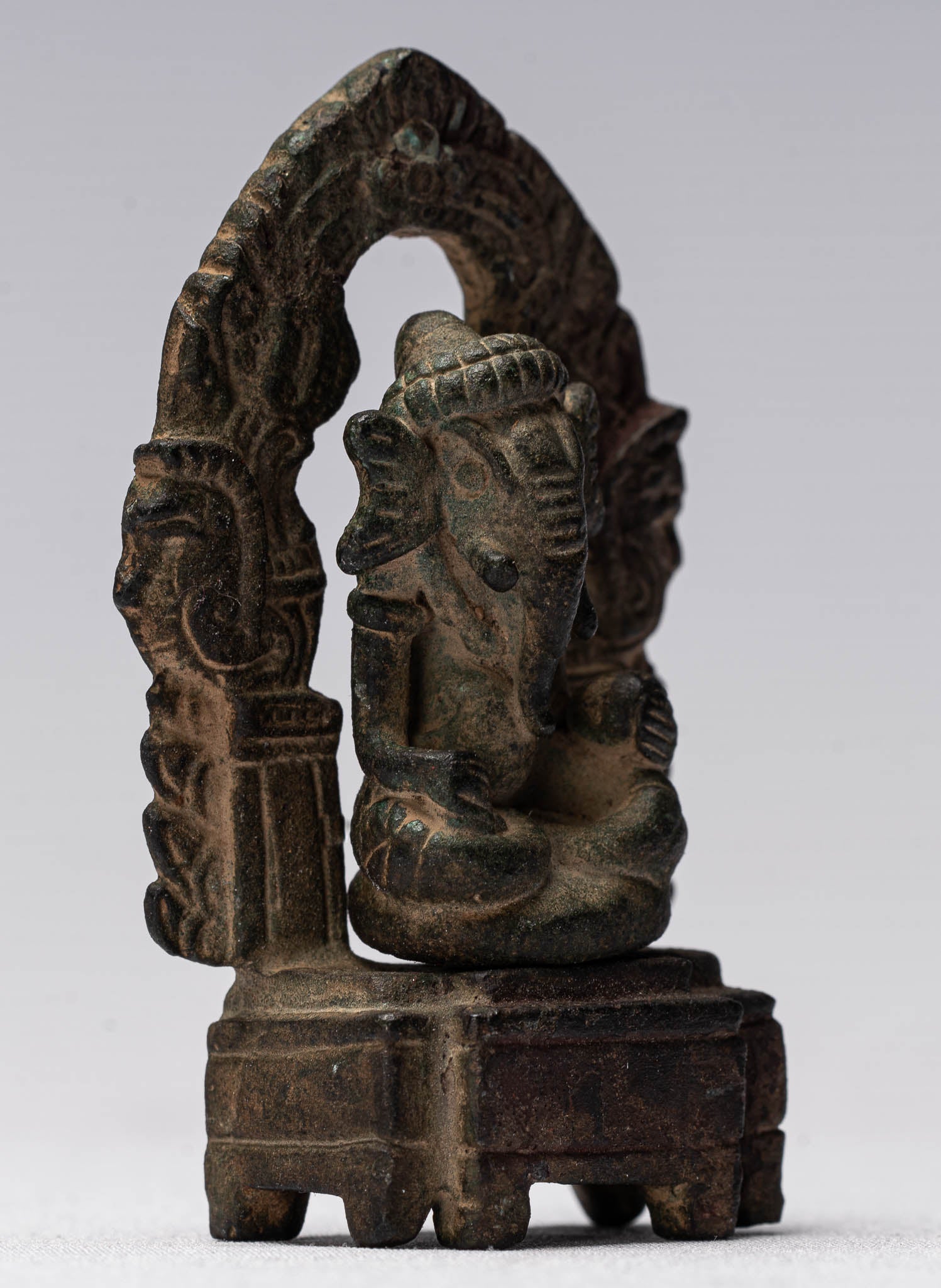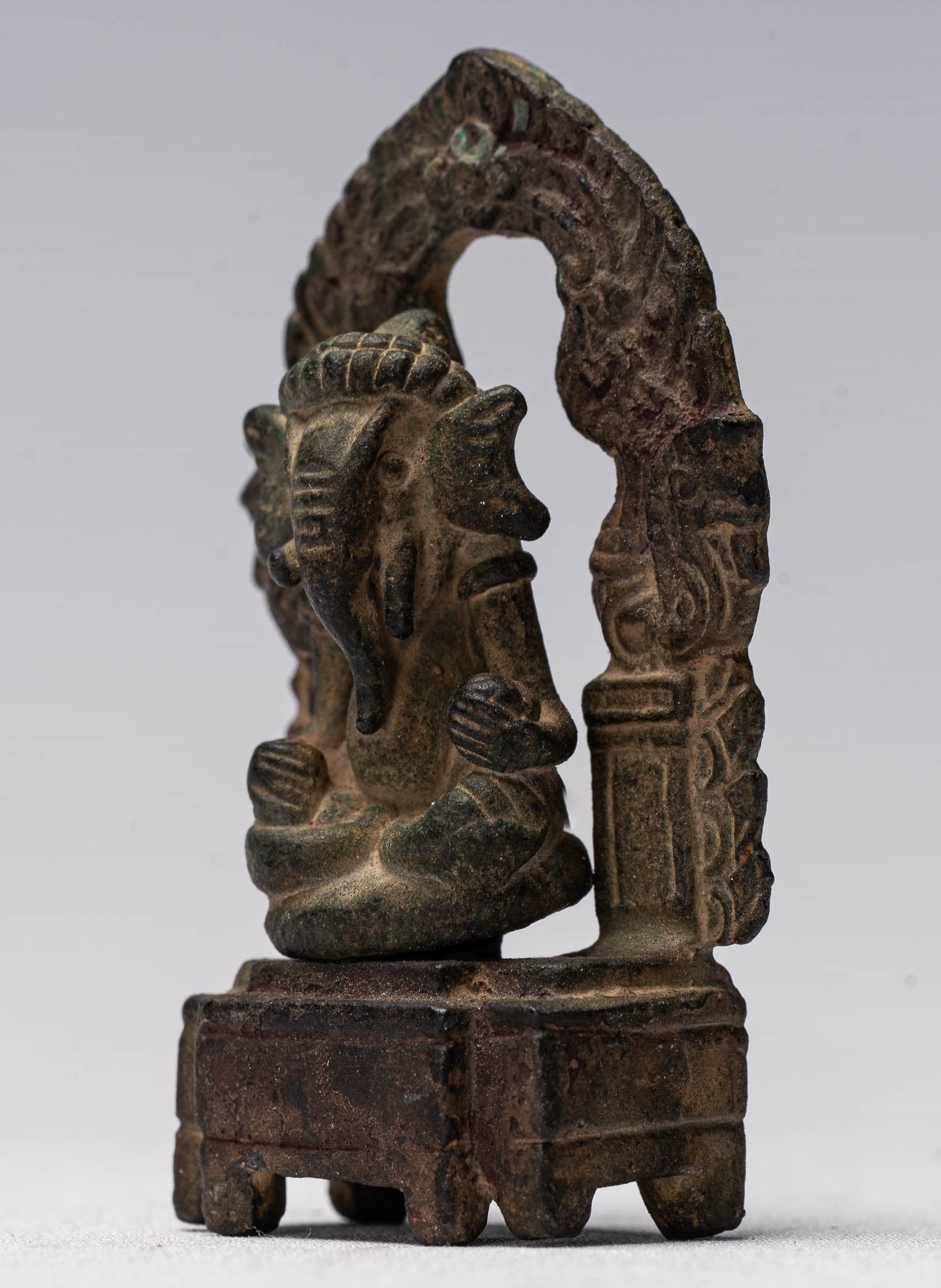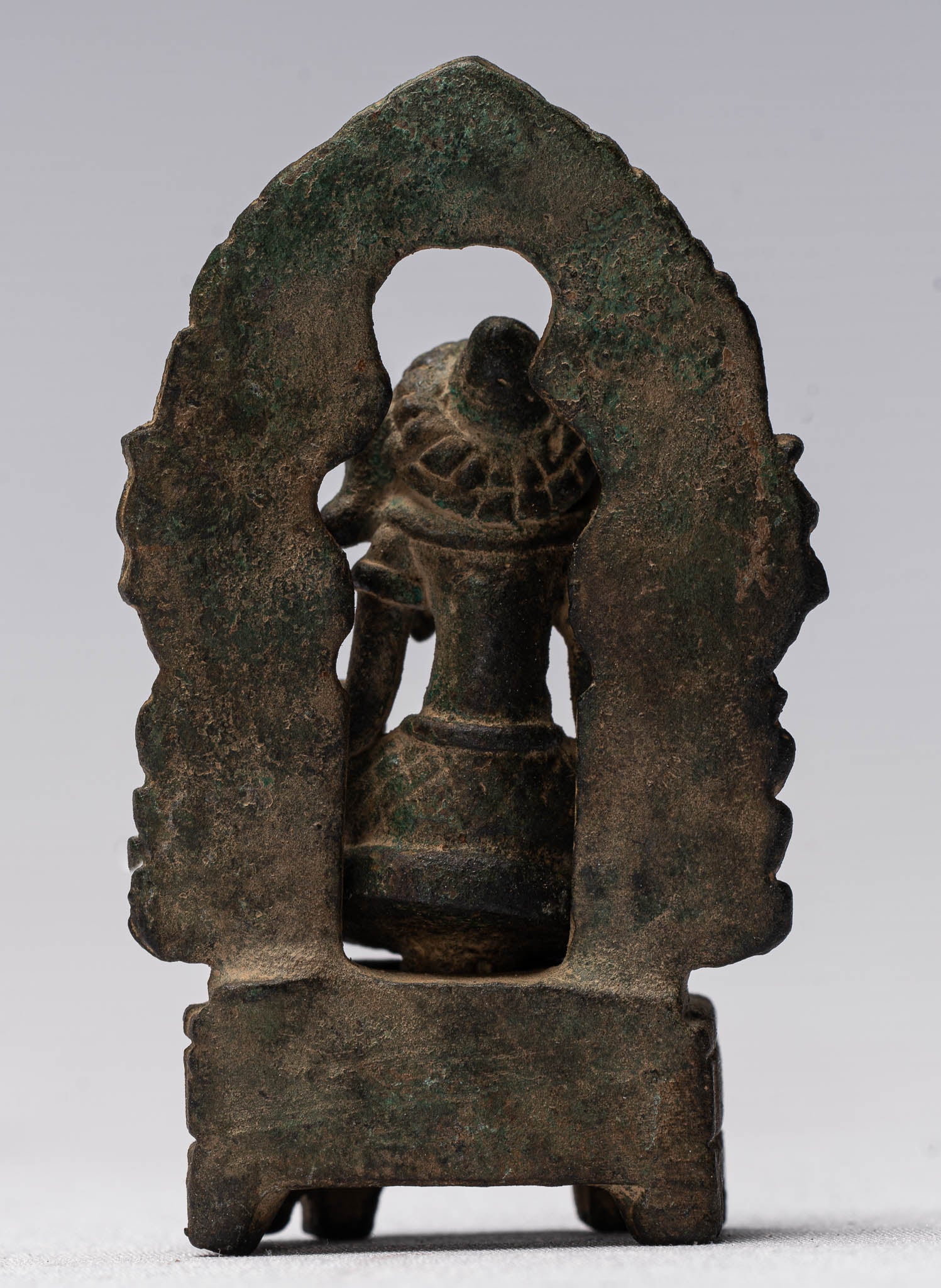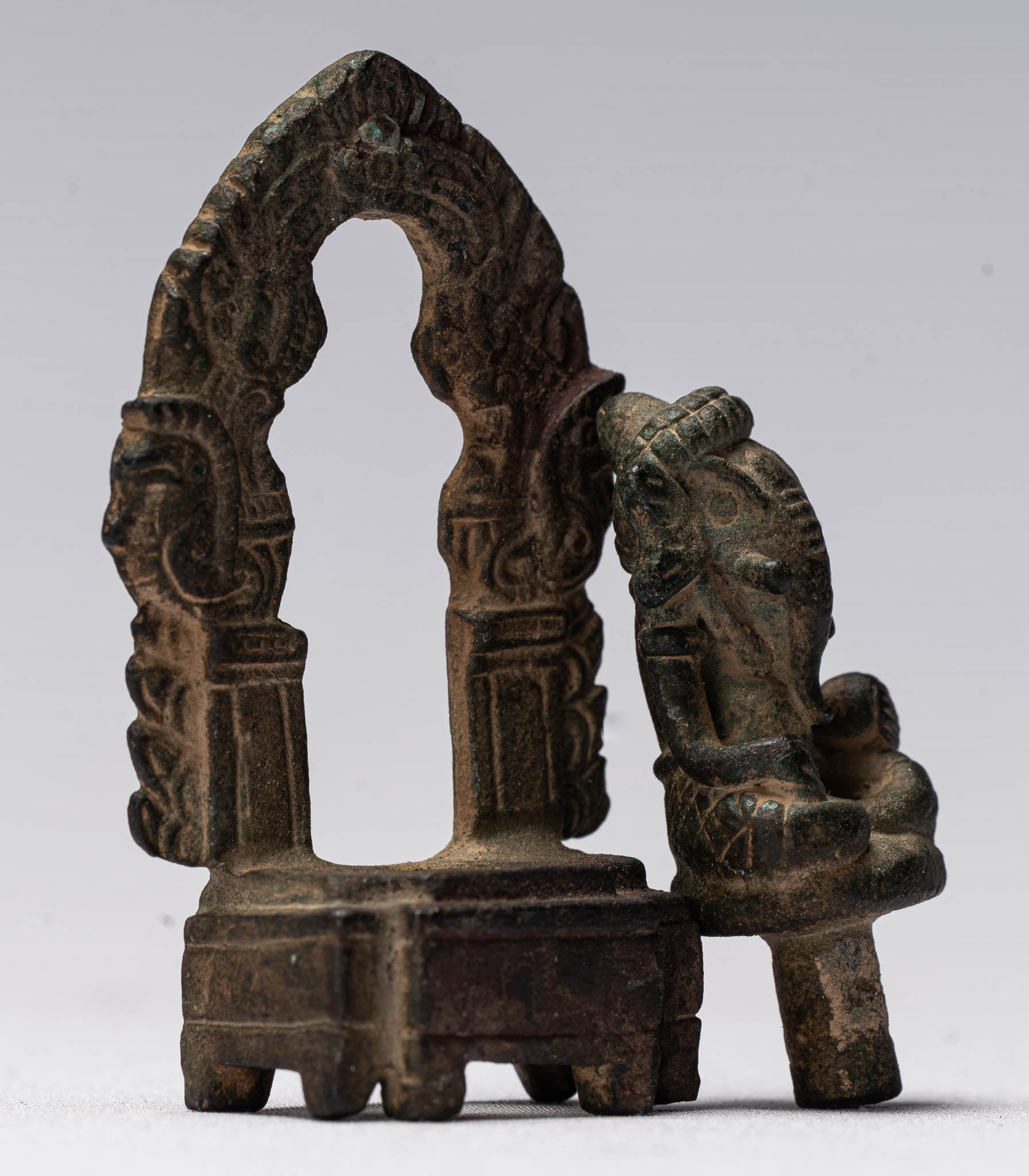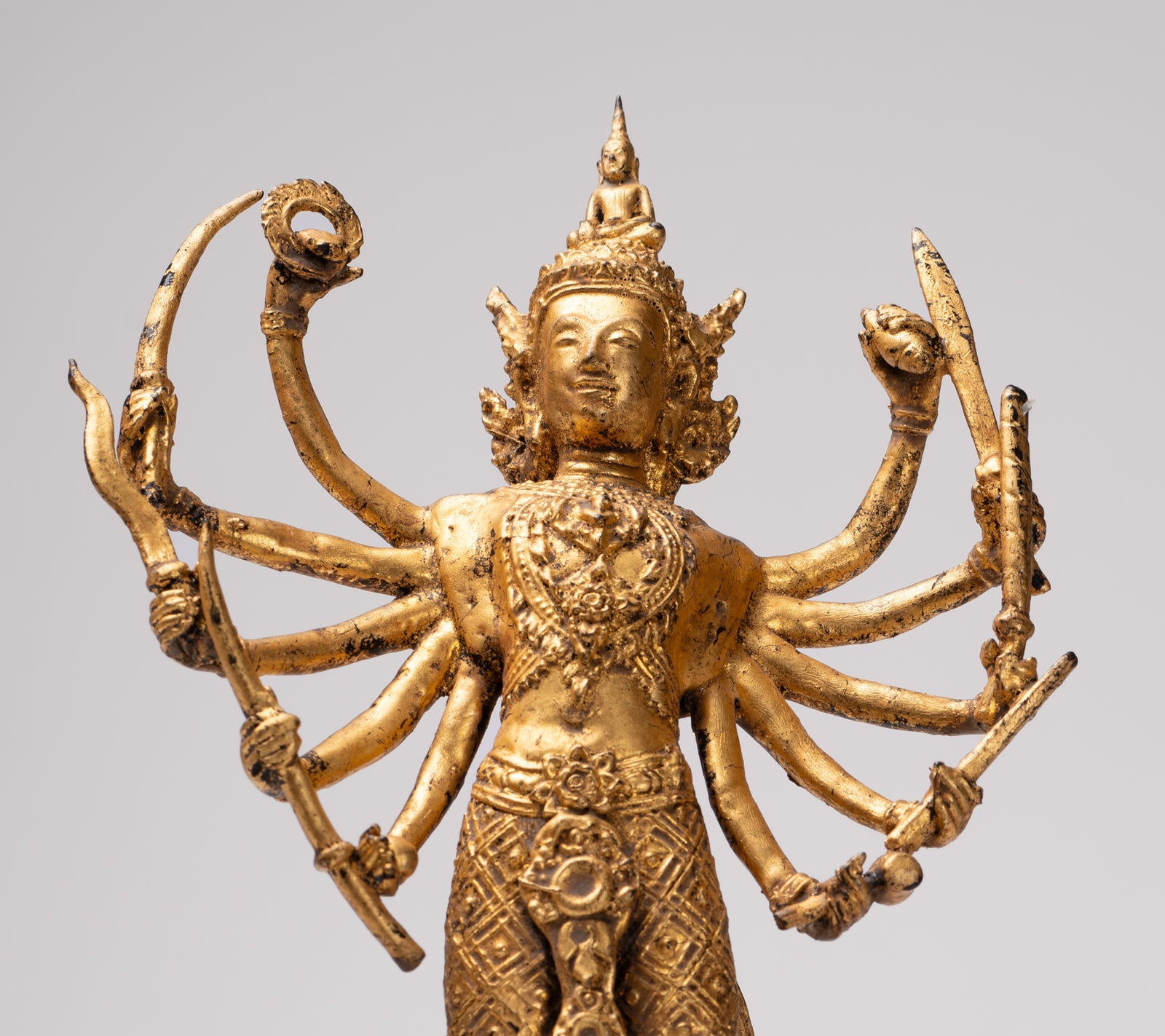-
Antique Thai Style Enthroned Bronze Seated Ganesha Statue - 6.5cm/3"
Measures - (Height) 6.5cm/3"
An antique Thai style bronze enthroned seated Ganesha.
The distinctive azurite and malachite patina of the piece is particularly delightful.
Here Ganesha is seated on an ornate throne. The piece is made from two separate but interlocking parts.
Ganesha is the elephant headed son of Shiva.
In his hand Ganesha holds laddus, the name for Indian sweetmeats. Whilst some may interpret this as Ganesha simply having a sweet tooth or a (relatable) penchant for candy, it is no surprise that the sweet delicacies carry further meaning. These tasty treats represent the reward for a wisely-led life and the eternal sweetness that comes from a fulfilled experience. Dentists around the world will be delighted to hear that Ganesha is never depicted actually eating the sweetmeats, but this item of the deity does also show his parallels with everyday human life. This relates to Ganesha’s status as a Vedic God, which means he does not forget even those who are not his devotees and instead looks out for everyone. This is communicated through his depiction as always looking upwards or at eye-level, as he is surveying all human life and is therefore not solely focussed on those praying to him.
In this depiction of Ganesha he also holds the remnants of his broken tusk. The breaking of the tusk has several backstories. One instance suggests that it was shattered when Shiva cut the head off the elephant, prior to bestowing it onto Ganesha. Another writes that Ganesha’s quill broke and he needed a writing instrument – try telling your boss that next time you try to write up a report with an elephant tusk because your computer crashed. Regardless of its multiple origins, the holding of the tusk represents less of a keepsake, and more of a depiction that our spirituality is more important than our outer bodies, meaning we must overcome the duality of the two as separate entities.
The direction of Ganesha's trunk has symbolic meaning. Here Ganesha's trunk hangs straight down.
The straight-trunked Ganesha is the rarest form, symbolizing the opening of the Sushumna Nadi, a central energy channel in the body. It signifies a state of complete alignment between the individual and the divine, where there is no separation or distortion. Although rarely found, idols with straight trunks are considered highly auspicious and are worshipped with reverence.
In his early forms in India, Ganesha was associated with fertility. Later he became widely revered as the Remover of Obstacles and more generally as Lord of Beginnings and Lord of Obstacles, patron of arts and sciences and the deity of intellect and wisdom.
Either side of Ganesha are two Naga serpents providing protection.
SATISFACTION GUARANTEE - We have been offering SE Asian Art, through our website, for many years and are proud of the reputation we have developed for fair and honest listings. However, if for any reason, whatsoever, you are unhappy with your purchase please just let us know and we will provide a full refund. We want you to be 100% happy with your purchase.
-
The majority of orders will be shipped with DHL. This is a secure, express and fully tracked service.
Items less than 2Kg we typically ship using Royal Mail.
Once we receive your order we try to ship all orders the same or next working day.
Large and/or fragile pieces requiring palletising, specialist crating and/or extra packaging may take a little longer. Palletised shipments will be delivered curbside.
All orders over 35 GBP will be shipped free of charge.

-
We genuinely hope that all purchases delight.
However, if they do not, regardless of reason, we will refund all orders upon receipt of the unwanted item. Just notify us within 14 days of receiving your order that you wish to make a return and send the piece back to us with 30 days of delivery.
Let Us Help You Find The Piece You Desire
Let Us Help You Find The Piece You Desire
I received the Buddha and it is stunning, thank you. Well packed as well.
Chris, Washington DC, USA
Received the Gorgeous Buddha today and it is absolutely beautiful. I love the textures in it. Thank you so much.
Savitha, Saratoga, CA, USA
Merci pour ce magnifique Buddha, vos statues sont toutes très belles.
Laurent, Paris, France


